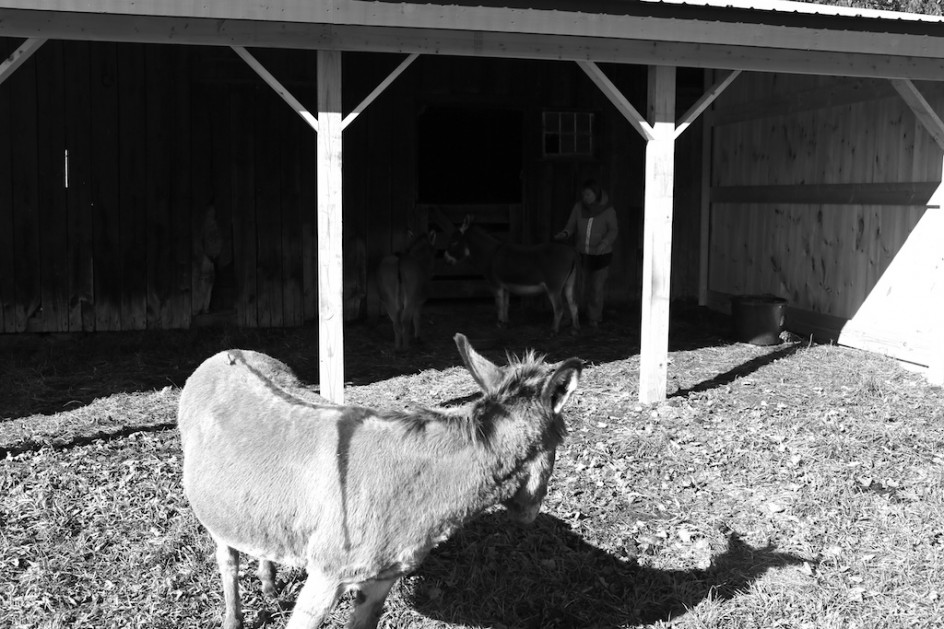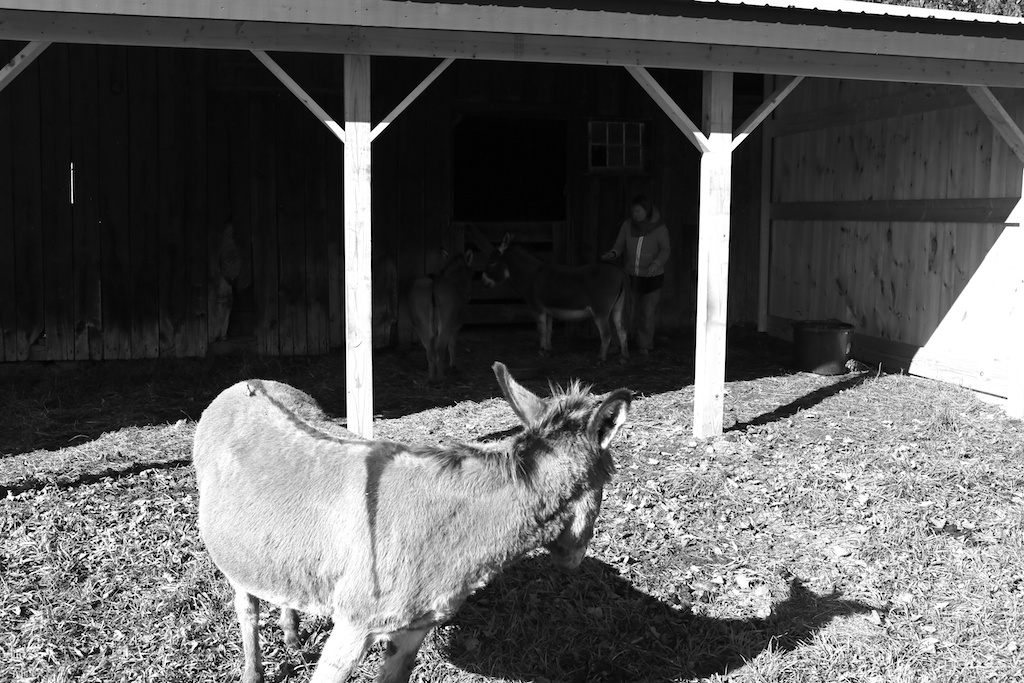
I think of all the animals on the earth, the donkeys have the richest spiritual history. Jesus rode one into Jerusalem, the Old and New Testaments are filled with references to donkeys, as is the Kabbalah and some of the richest works in literature, from Aesop’s Fables to Don Quixote to Platero And I. The Prophet Muhammad took pity on beasts of burden and he forbade the beating of animals. When he encountered a donkey who had been branded, he exclaimed “May Allah condemn the one who branded it.” Some of the world’s greatest artists painted donkeys and the Kabbalah, the mystical record of early Judaism has scores of references to donkeys, who were often wiser and more intuitive than the rabbi’s and prophets around them. Almost all of the standard and Sicilian donkeys in the world – there are millions – have crosses on their backs, one across the shoulders, the other stripe down their backs. They are much revered as hard-working, gentle creatures who often sacrifice themselves for the benefit of human beings and their labor.
I am fascinated by donkeys and their very rich history. The interesting thing about the crosses (I am not a Christian, but I love this story) is that early drawings and sketches of donkeys don’t show crosses and make no reference to them. The story – legend – of the donkey’s and their crosses tell of Jesus Christ’s donkey, a small but loyal creature who brought him to Jerusalem and followed him everywhere. When Jesus was sentenced to die, says the story, his donkey was upset that he was carrying his cross through the streets. This was a donkey’s work. When the donkey tried to reach his human, he was attacked by soldiers and the mob in the streets, stoned and prodded with spears and swords, hit by rocks. Bleeding and in pain, he rain off and hid nearby until Christ was dead and the crowds and soldiers had left.
The donkey approached the cross, saw that his master was dead, and let out a mournful bray for hours. Eventually, he left the square and as he did, the shadow of the cross fell on his back and ever since, he and the other donkeys of the world carry the cross on their backs. From that day, the fate of the donkey was to work hard to serve humans, and to accept the cruel fate that life often had in store for them. To serve people, to work hard, and to be often overburdened, mistreated and abandoned by them. This is, in much of the world, the fate of donkeys. There are an estimated 50 million donkeys in the world, in ever continent, in mountains, deserts, in cities and farms and villages. They work in the mountains of Tibet and the crowded cities of India. They work hard and often suffer at the hands of people.
My donkeys have escaped this fate, although Simon had his share of the dark side of humans. Thousands of donkeys have been abandoned since the 2008 recession, especially in the South and Southwest. There is no animal with so rich a story.

